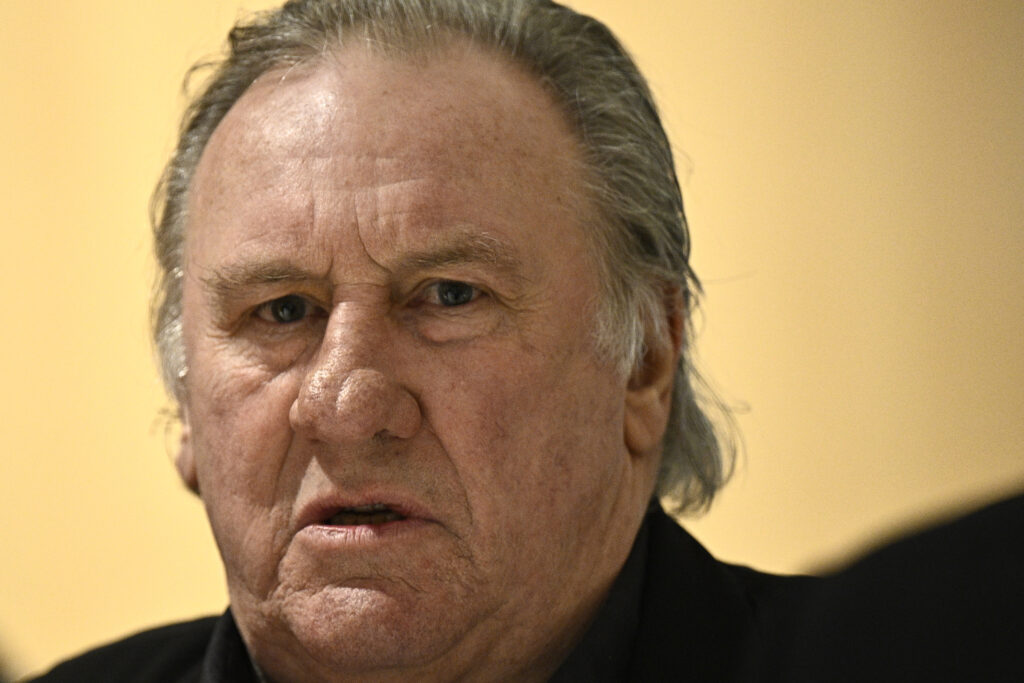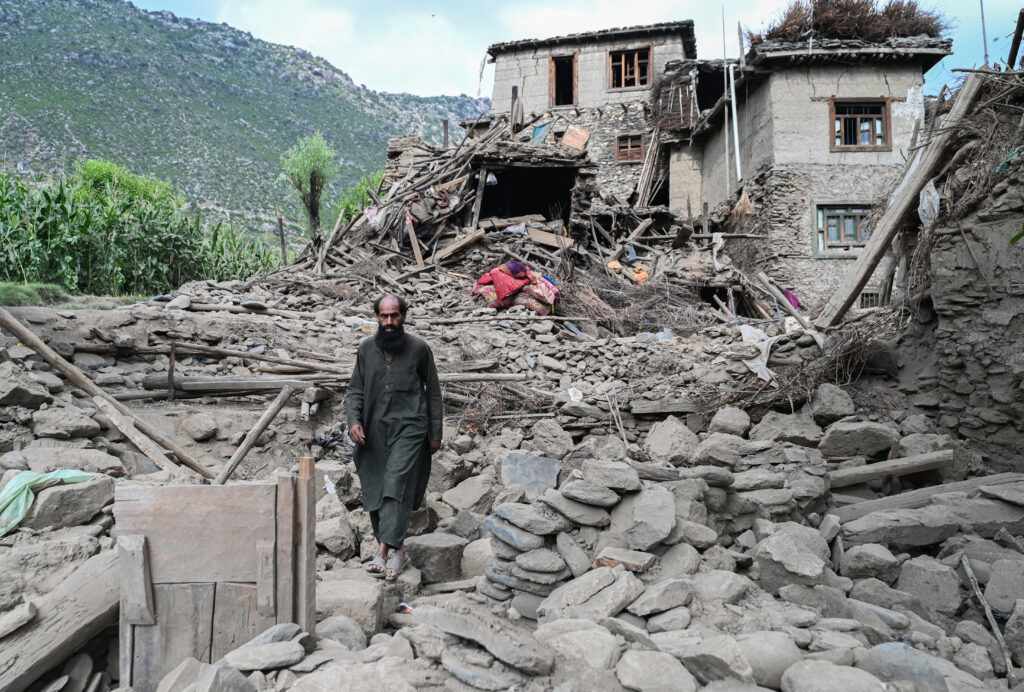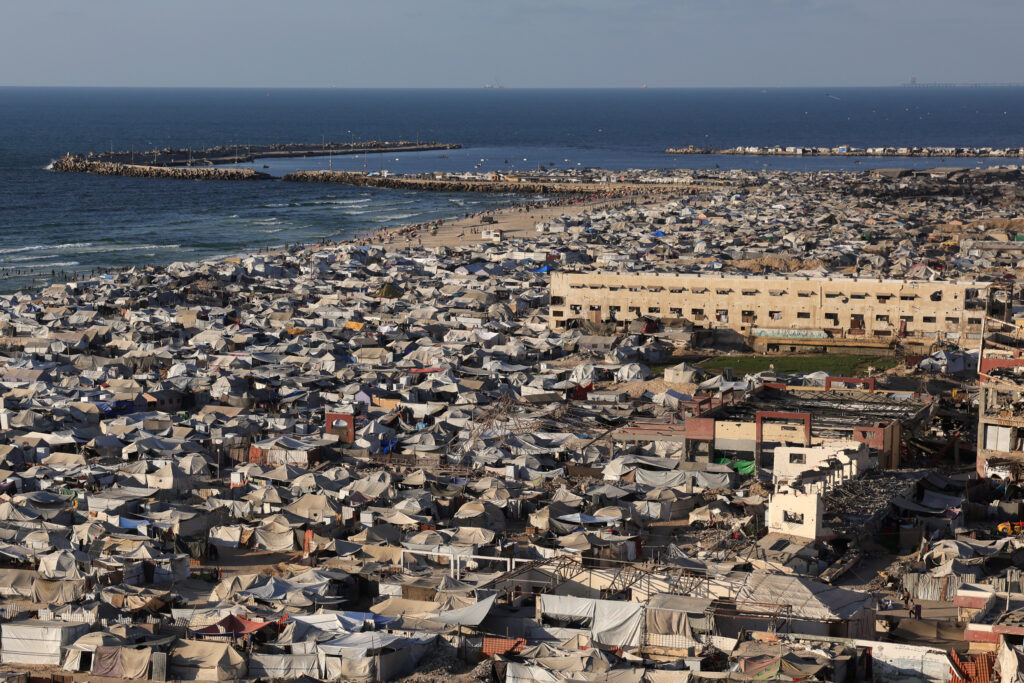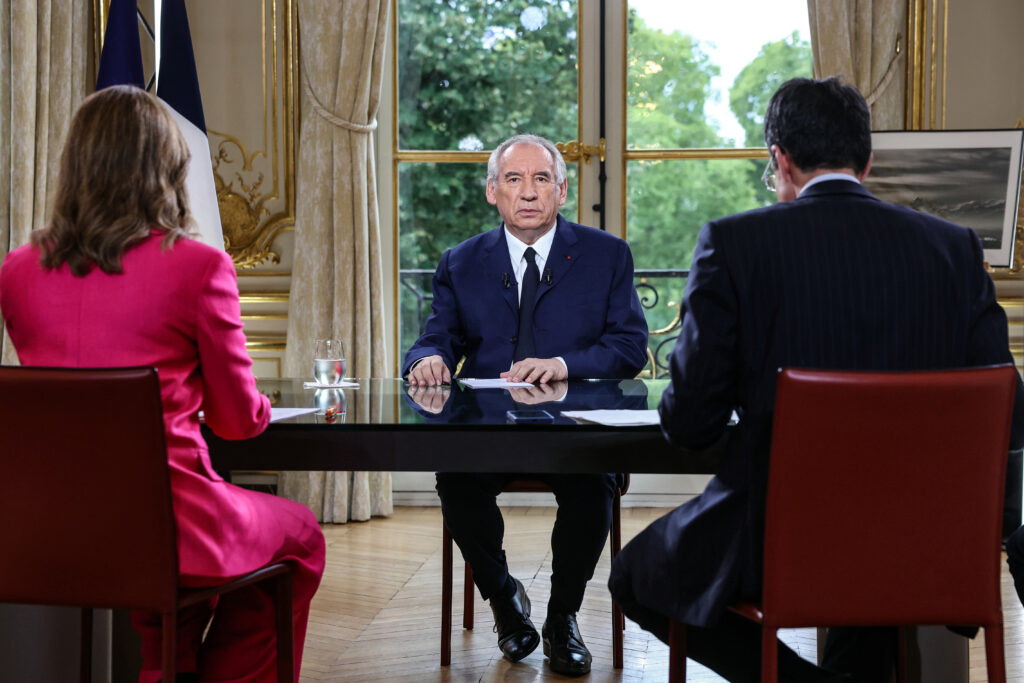Gérard Depardieu renvoyé en procès pour viols devant la cour criminelle départementale de Paris
Une juge d’instruction a ordonné le renvoi devant la cour criminelle départementale de Paris de Gérard Depardieu, 76 ans, pour viols et agressions sexuelles sur la comédienne Charlotte Arnould, a appris mardi l’AFP de sources proches du dossier.”Sept ans après, sept ans d’horreur et d’enfer… (…) L’ordonnance vient rétablir une forme de vérité judiciaire. Je crois que j’ai du mal à réaliser tant c’est énorme. Je suis soulagée”, a salué sur Instagram la comédienne, qui avait porté plainte quelques jours après les faits de 2018 qu’elle dénonce.”L’ordonnance de la juge d’instruction ordonne le renvoi de Gérard Depardieu devant la Cour criminelle pour des agressions sexuelles et viols par pénétration digitale à deux dates les 7 et 13 août 2018″ au domicile parisien de l’acteur, a salué Me Carine Durrieu-Diebolt, avocate de la plaignante. “Nous sommes soulagées et confiantes, ma cliente et moi. C’est une forme de vérité judiciaire pour Charlotte en attendant le procès criminel. Cette ordonnance est également une réponse aux allégations mensongères portées à son encontre dans certains médias”, a-t-elle ajouté.L’acteur, qui évoque une relation consentie, est mis en examen depuis le 16 décembre 2020 dans le cadre de cette instruction.Son avocat, sollicité par l’AFP, n’a pas commenté dans l’immédiat.Dans une lettre publiée dans Le Figaro en octobre 2023, l’acteur avait contesté les accusations. “Jamais au grand jamais, je n’ai abusé d’une femme”, avait-il affirmé, faisant référence aux accusations de Charlotte Arnould. “Une femme est venue chez moi une première fois, le pas léger, montant de son plein gré dans ma chambre. Elle dit aujourd’hui y avoir été violée”, avait-il écrit. “Il n’y a jamais eu entre nous ni contrainte, ni violence, ni protestation”.Charlotte Arnould avait initialement déposé une plainte en août 2018 dans une gendarmerie du sud de la France, puis le parquet d’Aix-en-Provence s’était dessaisi au profit du parquet de la capitale.Après un premier classement sans suite pour “infraction insuffisamment caractérisée”, l’actrice avait déposé une plainte avec constitution de partie civile, qui avait abouti à l’été 2020 à l’ouverture d’une information judiciaire.César du meilleur acteur en 1981 pour son rôle dans “Le dernier métro” (1980) de François Truffaut et en 1991 pour “Cyrano de Bergerac” (1990) de Jean-Paul Rappeneau, Gérard Depardieu a été pendant plusieurs décennies considéré comme un monstre sacré du cinéma français, connu dans le monde entier, avant d’être rattrapé par ses outrances verbales et des accusations de violences sexuelles. Mi-mai, il a été condamné à 18 mois de prison avec sursis pour l’agression sexuelle de deux femmes sur le tournage en 2021 des “Volets verts” de Jean Becker, condamnation dont il a fait appel.
La livre chute face au dollar après un sommet des taux d’emprunt britanniques
La livre sterling chute mardi après le pic atteint par le taux d’emprunt obligataire à 30 ans du Royaume-Uni, au plus haut depuis 1998, reflétant les inquiétudes pour l’économie du pays et ses finances publiques à l’approche du budget d’automne.Ce nouveau record pour les taux des bons du Trésor britannique à long terme, à 5,693%, accroît un peu plus la pression sur le gouvernement travailliste, qui peine à relancer l’activité économique, après avoir annoncé l’an passé d’importantes hausses d’impôts et des coupes drastiques dans les finances publiques.Après plusieurs revirements du gouvernement ces derniers mois sur certaines de ces coupes budgétaires, sous pression de sa propre majorité, les comptes publics sont de nouveaux très serrés.Alors que la ministre des Finances britannique Rachel Reeves s’est engagée à les équilibrer, les Britanniques s’attendent à de nouvelles hausses d’impôts lors de la présentation du budget d’automne le mois prochain.”Cette évolution du marché témoigne du manque de confiance des investisseurs dans le respect par le Trésor de ses règles d’emprunt”, estime Neil Wilson, analyste chez Saxobank — d’autant qu’elle intervient au lendemain du mini-remaniement qui voit passer une personnalité clef du ministère des Finances à Downing Street.Vers 10H30 GMT (12H30 à Paris), la devise britannique perdait 1,16% face au billet vert, à 1,3387 dollar.Cette “faiblesse de la livre reflète le sentiment que la Banque d’Angleterre pourrait intervenir en procédant à de nouvelles baisses de taux” pour soutenir l’économie britannique, précise Joshua Mahony, analyste chez Scope Markets.Les taux d’emprunt à 30 ans de l’Etat britannique avaient déjà retrouvé plusieurs fois depuis le début de l’année leurs niveaux de 1998 avant de redescendre un peu.Les obligations d’État sont également sous pression aux Etats-Unis et ailleurs en Europe, où les rendements de la dette allemande et de la dette française à échéance 30 ans évoluent autour de leurs plus hauts niveaux depuis la crise de la zone euro en 2011.D’autres devises se trouvent également en difficulté mardi contre le dollar. “Les investisseurs évaluent tous les risques politiques des deux côtés de l’Atlantique” et se “tournent vers les valeurs refuges”, estime Kathleen Brooks, directrice de la recherche chez XTB, interrogée par l’AFP.L’euro est ainsi miné par l’approche du vote de confiance du Premier ministre français François Bayrou le 8 septembre à l’Assemblée nationale, qui devrait probablement se solder par la chute de son gouvernement.Aux Etats-Unis, la justice américaine doit encore statuer sur le sort de la gouverneure de Réserve fédérale (Fed) Lisa Cook que Donald Trump veut révoquer.Malgré cette menace à l’indépendance de la banque centrale américaine, selon l’analyste de XTB, “le dollar demeure le meilleur allié des investisseurs dans ce contexte, car il reste l’actif le plus liquide”.L’or a également atteint un nouveau record dans la nuit, à 3.508,73 dollars l’once.Monnaie également généralement considérée comme une valeur refuge, le yen est délaissé par le marché mardi, en raison du “niveau élevé de la dette publique, conjugué aux troubles politiques” au Japon, après la démission d’un membre clé du parti au pouvoir, note Mme Brooks. Cours de mardi Cours de lundi ———————————- 10H30 GMT 21H00 GMTEUR/USD 1,1628 1,1711EUR/JPY 172,88 172,36EUR/CHF 0,9364 0,9374EUR/GBP 0,8686 0,8645USD/JPY 148,68 147,18USD/CHF 0,8053 0,8005GBP/USD 1,3387 1,3545
Scramble for survivors as Afghan earthquake death toll passes 1,400
A powerful earthquake that struck eastern Afghanistan at the weekend killed more 1,400 and injured 3,000 others, the Taliban government said Tuesday, making it one of the deadliest to hit the country in decades.The casualty toll has mounted steadily since the 6.0-magnitude earthquake hit late Sunday night, devastating remote areas in mountainous provinces near the border with Pakistan. Chief Taliban government spokesman Zabihullah Mujahid said on X Tuesday that 1,411 people were killed and 3,124 people were injured in the hard-hit province of Kunar alone. Another dozen people were killed and hundreds injured in neighbouring Nangarhar province.The earthquake could impact “hundreds of thousands”, said United Nations humanitarian coordinator in Afghanistan Indrika Ratwatte.Rescuers were still desperately searching Tuesday for survivors in the rubble of homes flattened in Kunar.Emergency “operations continued throughout the night”, the head of the Kunar Provincial Disaster Management Authority, Ehsanullah Ehsan, told AFP.He said there were “still injured people left in the distant villages” in need of evacuation to hospitals.Villagers joined the rescue efforts, using their bare hands to clear debris from mud and stone homes built into steep valleys.Obaidullah Stoman, 26, who travelled to the village of Wadir to search for a friend, was overwhelmed by the level of destruction.”I’m searching here, but I didn’t see him. It was very difficult for me to see the conditions here,” he told AFP.”There is only rubble left.”The dead, including children, were wrapped in white shrouds by villagers who prayed over their bodies before burying them.Some of the hardest-hit villages remain inaccessible due to blocked roads, the UN migration agency told AFP.The earthquake epicentre was about 27 kilometres (17 miles) from Jalalabad, according to the US Geological Survey, which said it struck just eight kilometres below the Earth’s surface.Such relatively shallow quakes can cause more damage, especially since the majority of Afghans live in low-rise, mud-brick homes vulnerable to collapse.After decades of conflict, Afghanistan is one of the poorest countries in the world, facing a protracted humanitarian crisis and the influx of millions of Afghans forced back to the country by neighbours Pakistan and Iran in recent years.Since the Taliban seized power in 2021, foreign aid to the country has been slashed, undermining the already impoverished nation’s ability to respond to disasters.The United States was the largest aid donor until early 2025, when all but a sliver of funds were cancelled after President Donald Trump took office.In June, the United Nations said it was drastically scaling back its global humanitarian aid plans due to the “deepest funding cuts ever”.On Monday, UN Secretary-General Antonio Guterres said in a statement the organisation was working with authorities to “swiftly assess needs, provide emergency assistance and stand ready to mobilise additional support”, and announced an initial $5 million.- ‘Whole house collapsed’ -Many of those living in the quake-hit villages were among the more than four million Afghans who have returned to the country from Iran and Pakistan in recent years.Helicopters shuttled the injured from the remote village of Wadir in Nurgal district to hospitals in the nearest city, Jalalabad.Fourteen-year-old Akhlaq was injured and evacuated to the hospital, but five members of his family were killed when the earthquake shook Nurgal. “Our whole house collapsed, my brothers and father were all buried. Only I survived and made it out,” he told AFP. “Then I heard my father’s voice and I managed to rescue him.” “There are victims who are still under the rubble, but there is nobody to help them and pull them out.”Afghanistan is frequently hit by earthquakes, especially in the Hindu Kush mountain range, near the junction of the Eurasia and India tectonic plates.In October 2023, western Herat province was devastated by a 6.3-magnitude earthquake, which killed more than 1,500 people and damaged or destroyed more than 63,000 homes.A 5.9-magnitude quake struck the eastern province of Paktika in June 2022, killing more than 1,000 people and leaving tens of thousands homeless.
Israel builds up military ahead of Gaza City offensive
Israel intensified its military build-up on Tuesday as reservists began responding to call-up orders ahead of a planned offensive to capture Gaza City, nearly two years into a devastating war. Despite mounting pressure at home and abroad to end its campaign in the Palestinian territory, Israel is gearing up to seize Gaza’s largest city — intensifying bombardments and operating in the outskirts in recent days.The United Nations estimates that nearly a million people live in Gaza City and its surroundings, where a famine has been declared.In a statement, the military said it had in recent days “been carrying out logistical and operational preparations ahead of expanded combat operations and the large-scale mobilisation of reservists.”Israeli media reported that reservists began responding to draft orders, with Channel 12 saying a second wave was expected in November.Approving the military’s plans for the conquest of Gaza City in late August, Israeli Defence Minister Israel Katz said he had authorised the call-up of about 60,000 reservists.At the time, an Israeli military official told journalists the draft would begin in September and that the main forces operating in Gaza in the next stage of the campaign would be active duty forces, not reservists.On the ground in Gaza, the civil defence agency said at least 45 people had been killed by Israeli forces, including 10 in an air strike on a residential building in the southwest of Gaza City.AFP footage from the aftermath of the strike in the Tel al-Hawa neighbourhood showed rescue workers sifting through piles of rubble and mangled metal on the top floor of the building, from where Palestinians retrieved the body of a dead girl.”We were sleeping safely in our homes and suddenly we woke up to the sound of bombing and destruction and found most of our neighbours murdered and injured,” said Sanaa al-Dreimli, who witnessed the strike.”We woke up to lifeless bodies. What is the fault of these children? What did we do for this to happen to us?”Contacted by AFP, the Israeli military requested precise timeframes and coordinates to look into the civil defence figures, but said it could check one incident in which the rescue agency reported four killed by Israeli gunfire near an aid point in the centre of the territory.Media restrictions in Gaza and difficulties in accessing many areas mean AFP is unable to independently verify the tolls and details provided by the civil defence agency or the Israeli military.- Evacuation ‘incomprehensible’ -The military last week declared Gaza City a “dangerous combat zone”, while a spokesman said the evacuation of the population hub was “inevitable”.The International Committee of the Red Cross has warned any Israeli attempt to evacuate the city would be impossible to do in a safe and dignified manner.The dire state of shelter, healthcare and nutrition in Gaza meant evacuation was “not only unfeasible but incomprehensible under the present circumstances,” ICRC president Mirjana Spoljaric said in a statement.Pressure is growing on Israel to halt its offensive, which it says is aimed at eradicating Hamas and returning hostages seized by Palestinian militants in their October 7, 2023 attack that sparked the war.Belgium on Tuesday became the latest Western country to say it will recognise the State of Palestine at the UN General Assembly this month, following similar announcements by Australia, Canada and France.In a post on X, Belgian Foreign Minister Maxime Prevot said that “firm sanctions are being imposed against the Israeli government” and that the decision came “in view of the humanitarian tragedy” unfolding in Gaza.Hamas’s October 2023 attack on Israel resulted in the deaths of 1,219 people, mostly civilians, according to an AFP tally based on Israeli figures.Of the 251 hostages seized during Hamas’s 2023 attack, 47 are still being held in Gaza, including 25 the military says are dead.Israel’s retaliatory offensive has killed at least 63,557 Palestinians, most of them civilians, according to figures from the health ministry in Hamas-run Gaza that the United Nations considers reliable.
Angleterre: des transferts record entre hégémonie, survie et livres de compte
Les clubs de Premier League ont dépensé cet été comme jamais, dopés par les droits TV et, pour moitié, par l’argent des compétitions européennes, une réalité qui embrasse des enjeux variés de survie, de suprématie… ou d’écriture comptable.Au total, l’élite anglaise a acheté pour plus de 3,4 milliards d’euros, selon les chiffres publiés mardi par le cabinet Deloitte, une somme vertigineuse qui pulvérise l’ancien record et surpasse les dépenses additionnées des championnats de France, d’Italie, d’Espagne et d’Allemagne.La ligue la plus suivie au monde profite des lucratifs contrats de diffusion (domestiques et étrangers), un avantage considérable sur la concurrence continentale et qui bénéficie à tous, promus inclus.Cette puissance financière s’est accrue avec l’élargissement des compétitions européennes qui a permis à la Premier League d’y placer cette année, et pour la première fois, neuf de ses vingt clubs (six en Ligue des champions, deux en Ligue Europa, un en Ligue Conférence).- Ruissellement… -Un club comme Tottenham, 17e la saison dernière mais qualifié en C1 grâce à son triomphe en Ligue Europa, peut attirer des hauts salaires en prêt (Kolo Muani, Palhinha) ou recruter des talents comme Xavi Simmons et Mohammed Kudus.Les 63 millions d’euros correspondant à l’ailier ghanéen ont par exemple permis à West Ham, le club vendeur, d’en réinvestir 46 sur un milieu portugais de 21 ans venu de Southampton (D2), Mateus Fernandes.L’une des spécificités de l’été 2025 tient d’ailleurs dans ces transactions entre clubs anglais, plus nombreuses et exceptionnelles par leur ampleur.Cela s’explique en partie par une astuce comptable: le club vendeur enregistre les bénéfices immédiatement, alors que le club acheteur étale les frais sur la durée du contrat de sa recrue.Ce système respecte les règles de viabilité financière imposées en Angleterre (les “Profitability and Sustainability Rules”, ou PSR) sans brider l’investissement, bien au contraire.- … et course à l’armement -Un durcissement à venir de cette réglementation a peut-être conduit certains clubs à une course à l’armement, affirment des observateurs.”J’ai l’impression que Liverpool profite de la situation actuelle pour faire le plein de talents de façon à devenir virtuellement injouable”, a avancé Christian Purslow, ancien dirigeant d’Aston Villa, sur Sky Sports.La holding américaine Fenway Sports Group qui possède Liverpool a rompu cet été avec son habituelle politique d’équilibre: les dépenses nettes (en retranchant les ventes) avoisinent 250 millions d’euros après l’arrivée d’Alexander Isak lundi contre 144M EUR (record anglais).Les autres cadors ont également mis le paquet, de Manchester City à Chelsea en passant par Arsenal qui a multiplié les achats (Zubimendi, Madueke, Eze, Gyökeres…) sans aucune entrée d’argent pour compenser, ou presque.Cette fièvre acheteuse s’est étendue jusqu’aux promus Burnley, Leeds et Sunderland qui ont chacun sorti, sans exception, plus de 100 millions de livres pour adapter leurs effectifs à l’exigeante Premier League.Ils espèrent ainsi écarter la malédiction qui frappe depuis deux saisons les nouveaux venus, tous redescendus en Championship (D2) après une seule saison dans l’élite.Sunderland notamment s’est payé le luxe d’enrôler Granit Xhaka, ancien capitaine d’Arsenal et du Bayer Leverkusen, ainsi que le talentueux milieu sénégalais Habib Diarra, recruté contre 30 millions de livres (record du club) en provenance de Strasbourg.Le pari des Black Cats a payé d’entrée avec deux victoires empochées durant les trois premières journées du championnat. Six points en poche, c’est déjà la moitié du total amassé par Southampton, la lanterne rouge, en 38 matches la saison dernière.
Dissolution ou présidentielle anticipée: l’après-Bayrou dans toutes les têtes
A six jours d’une probable chute du gouvernement Bayrou, les appels se multiplient dans tous les camps politiques pour une nouvelle dissolution de l’Assemblée nationale ou une démission anticipée du président Emmanuel Macron, créant des fractures jusque dans le “socle commun” actuellement aux manettes. Le chef de l’Etat l’a répété à plusieurs reprises: législatives ou présidentielle anticipées ne sont pas à son ordre du jour. Mais plus l’échéance approche, plus la question est sur toutes les lèvres. Et son entourage ne cache pas qu’une dissolution n’est pas exclue en cas de nouveau blocage.En attendant, François Bayrou a repris mardi ses rencontres avec les partis politiques pour tenter de les convaincre de lui accorder leur confiance lundi. Place publique de Raphaël Glucksmann puis le RN ont été reçus dans la matinée mais “le miracle n’a pas eu lieu”, a résumé le patron du parti à la flamme Jordan Bardella, rendant la chute du gouvernement quasi-inéluctable. La gauche et l’extrême droite, voire certains Républicains, rejettent en bloc le projet de budget pour 2026 qui prévoit notamment un effort de 44 milliards d’euros, alors que le taux d’intérêt de la dette française à 30 ans a dépassé 4,5%, une première depuis 2011. A gauche, si La France insoumise plaide sans relâche pour le départ du locataire de l’Elysée, Ecologistes et socialistes tentent d’organiser une nouvelle alliance.Il faut “qu’on se retrouve, qu’on se mette dans une pièce et qu’on prépare la suite”, a déclaré lundi soir la patronne des Écologistes Marine Tondelier, soucieuse d’évoquer avec ses partenaires “tous les scénarios”: “qu’il y ait une dissolution, qu’il y ait une nomination de quelqu’un plutôt de la gauche et des écologistes ou de quelqu’un d’autre”, ou qu’il y ait “une destitution”. Après avoir offert samedi ses services pour prendre la relève, le premier secrétaire du PS, Olivier Faure, a répété vouloir “un Premier ministre de gauche, avec un projet de gauche et qui soumette ses propositions au Parlement” car “une dissolution ne changera rien aux équilibres” politiques. – “Position de force” -De l’autre côté de l’échiquier politique, l’extrême droite met, elle, en scène ses préparatifs pour des législatives anticipées. Marine Le Pen et Jordan Bardella ont réclamé mardi dans la cour de Matignon une “dissolution ultra-rapide”. “Plus tôt on retournera aux urnes, plus tôt la France aura un budget”, a estimé le président du parti. De fait, la Rassemblement national se voit bien accéder rapidement à Matignon. “Des sondages nous invitent à penser qu’on peut faire la course en tête et moi je crois que nous pouvons avoir une majorité absolue”, a déclaré mardi son vice-président Sébastien Chenu, convaincu que de nouvelles législatives précipiteraient encore “l’écroulement du bloc central”. Mais c’est au sein du “socle commun”, des Macronistes jusqu’à la droite LR qui gouvernent tant bien que mal depuis un an, que la question divise le plus. Symbole de cette ligne de crête, le président des LR et puissant ministre de l’Intérieur, Bruno Retailleau, défend le vote de confiance contre “les incendiaires qui voudraient allumer la mèche de ce qui pourrait être demain une explosion financière et budgétaire”. Mais certains députés LR ont l’intention de voter contre et leur patron, Laurent Wauquiez, pousse pour une consultation des adhérents du parti. Le locataire de Beauveau ne cache pas ses réserves sur certaines mesures budgétaires, comme la suppression de deux jours fériés. Opposé à une nouvelle dissolution, Bruno Retailleau l’est également à une démission du président. “Ca fragiliserait nos institutions”, a-t-il plaidé lundi. Mais au sein de LR, des voix comme l’ancien ministre Jean-François Copé, ou la présidente de la région Ile-de-France Valérie Pécresse l’appellent au contraire de leurs vœux. Dans cette cacophonie semblant précéder un épilogue aux airs de déjà-vu lors de la chute du gouvernement de Michel Barnier en décembre 2024, l’opinion aura-t-elle le dernier mot ? C’est en tout cas le souhait des organisations syndicales, au premier rang desquelles la CGT, qui appelle à la mobilisation les 10 et 18 septembre (en intersyndicale) contre le projet de budget. “Nous voulons reprendre les choses en main: ce n’est plus possible que notre avenir se décide avec des petits arrangements politiciens ou avec des passages en force, comme veut toujours le faire Emmanuel Macron”, a prévenu sa secrétaire générale Sophie Binet mardi sur France 2.Soucieuse de “mettre ce budget sous surveillance populaire”, elle a estimé être “en position de force”.






